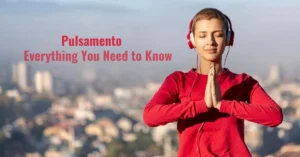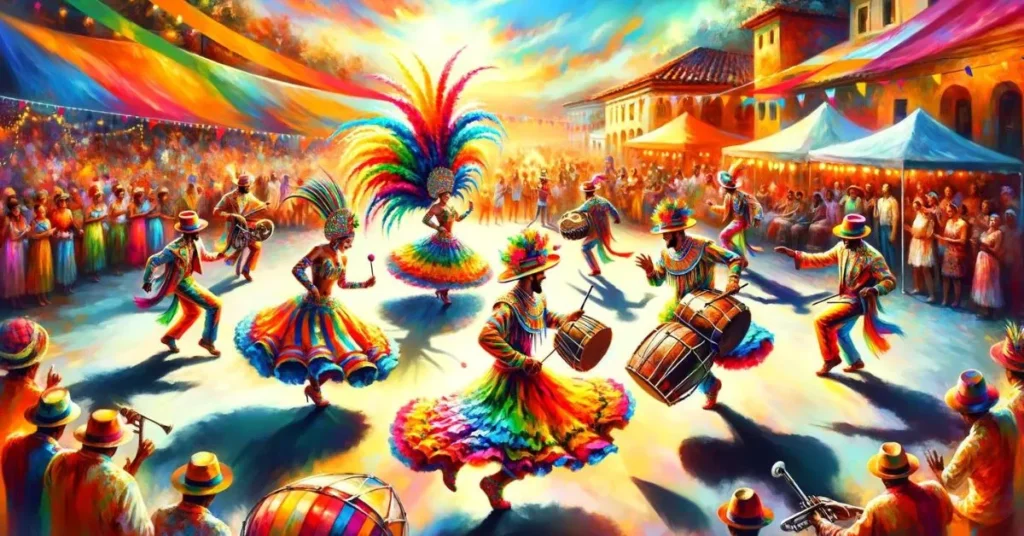Discovering Pulsamento: The Hidden Rhythms of Life
Pulsamento is a fascinating concept that reveals the hidden rhythms of life all around us. The word “pulsamento” comes from the Latin word “pulsare,” meaning “to beat,” and it describes the natural beats and cycles that are part of our world. From the steady beat of your heart to the rhythmic patterns in nature, pulsamento is everywhere.
Understanding pulsamento helps us see how these rhythms affect our daily lives and our surroundings. Whether it’s the way music makes us move or the patterns we see in art, pulsamento is the force that keeps everything in harmony. In this blog post, we will explore the many ways pulsamento shows up in different areas of life and how it connects us to the world around us.
1. What is Pulsamento? Understanding the Rhythm of Life
Pulsamento is a cool concept that helps us understand the rhythms all around us. It comes from the Latin word “pulsare,” which means “to beat.” Think of it as the natural beats or cycles that happen in our world. From your heartbeat to the changing seasons, pulsamento is everywhere.
In simple terms, pulsamento is the rhythm that keeps things moving and changing. It helps our bodies stay in balance and makes sure everything works well. Just like a drumbeat keeps a song going, pulsamento keeps our world in harmony.
When you notice the patterns in nature or hear the rhythm in music, you are experiencing it. It shows up in many ways and helps us understand how things are connected. By recognizing these rhythms, we can better appreciate the world around us.
2. How Pulsamento Influences Your Heartbeat
Your heartbeat is a perfect example of it in action. it describes the rhythmic beating of your heart that keeps blood flowing through your body. This steady rhythm is essential for staying healthy and feeling good.
Every time your heart beats, it’s creating a pulse that moves blood to different parts of your body. This regular beat, or pulsamento, helps ensure that your organs and muscles get the oxygen and nutrients they need. Without this rhythm, your body wouldn’t function properly.
Listening to your heartbeat can be calming and reassuring. It’s a reminder of the natural rhythms that keep you alive and well. Understanding it helps us appreciate how important these beats are for our health.
3. Pulsamento in Nature: The Rhythms of Tides and Seasons
Nature is full of pulsamento, from the tides of the ocean to the changing seasons. it helps us understand how these natural rhythms affect the world around us. For example, the tides rise and fall in a regular pattern, showing a natural rhythm.
The changing seasons also follow a rhythm. Spring, summer, fall, and winter come in a repeating cycle. This cycle of seasons, or it, affects plants and animals and helps them adapt to their environment.
Noticing these patterns in nature helps us see how it works. It’s a reminder that the world is full of natural rhythms that keep everything in balance. By observing these patterns, we can better understand and appreciate the beauty of nature.
4. The Role of Pulsamento in Music: How Beats Create Movement
it plays a big role in music, where rhythms and beats create movement and energy. In a song, the beats are like the heartbeat of the music. They help keep the song moving and make it enjoyable to listen to.
When you listen to music, you can often hear a regular beat that repeats. This rhythm, or pulsamento, makes you want to dance or tap your feet. It gives music its flow and keeps it interesting.
Understanding pulsamento in music helps us appreciate how rhythms shape our listening experience. The beats and patterns make music exciting and memorable. By recognizing these rhythms, we can enjoy music even more.
5. Visual Arts and Pulsamento: Patterns and Repetition
In visual arts, pulsamento is seen through patterns and repetition. Artists use rhythmic designs to create harmony and interest in their work. For example, repeating shapes or colors can make an artwork feel balanced and lively.
Patterns in art, like stripes or dots, create a sense of rhythm. This rhythm, or it, helps guide the viewer’s eye and makes the artwork more engaging. It’s like a visual beat that brings the piece to life.
By exploring it in art, we can see how important rhythms are in creating beautiful and effective designs. Patterns and repetition help make art interesting and enjoyable to look at.
6. Pulsamento in Language: The Rhythm of Speech and Writing
Pulsamento also shows up in language, where rhythm makes speech and writing more engaging. The way we talk, with pauses and emphasis, creates a natural flow that helps communicate ideas clearly.
In writing, rhythms can be found in poetry and stories. For example, the rhythm of words and sentences can create a musical quality that makes reading more enjoyable. This rhythm, or pulsamento, helps keep the reader interested and connected to the story.
Recognizing it in language helps us understand how rhythm affects communication. It’s a key part of making language lively and memorable. By paying attention to these patterns, we can become better speakers and writers.
7. Cultural Celebrations and Pulsamento: Festivals and Traditions
Many cultural celebrations and traditions are based on pulsamento. Festivals and rituals often follow repeating patterns, like annual events or seasonal celebrations. These rhythms help people connect with their culture and history.
For example, holidays and festivals often occur at the same time each year, creating a sense of continuity. This regular pattern, or it, helps bring communities together and reinforces cultural traditions.
Understanding it in cultural practices helps us see the importance of these rhythms in our lives. They provide a sense of belonging and keep traditions alive. By celebrating these rhythms, we connect with our heritage and each other.
8. The Connection Between Pulsamento and Dance
Dance is another great example of pulsamento. Rhythmic movements in dance are like the beats in music, creating a flow that is both expressive and enjoyable. The pulsamento in dance helps convey emotions and tell stories through movement.
Dancers often move in sync with the rhythm of the music, creating a visual representation of it. This connection between music and movement makes dance a powerful form of expression. It shows how rhythmic patterns can enhance creativity and communication.
Exploring it in dance helps us appreciate how rhythms shape this art form. By understanding these patterns, we can better enjoy and connect with dance performances.
9. How Technology Uses Pulsamento: The Rhythm of Digital Systems
In technology, pulsamento can be seen in the rhythmic patterns of digital systems. For example, the way data is transmitted and processed follows regular cycles, helping technology work smoothly and efficiently.
Computers and electronic devices use rhythmic patterns to keep everything in sync. This it ensures that information is processed correctly and at the right time. It’s like a digital heartbeat that keeps technology running smoothly.
Understanding it in technology helps us see how these rhythms are essential for modern devices. By recognizing these patterns, we can appreciate the complexity and efficiency of digital systems.
10. Pulsamento and Mental Health: The Calming Effects of Rhythms
Pulsamento has a calming effect on our mental health. Rhythms and repetitive patterns can help reduce stress and promote relaxation. For example, rhythmic breathing exercises are used in mindfulness practices to calm the mind.
Listening to music with a steady rhythm can also improve mood and well-being. The it in music helps create a soothing environment that can ease anxiety and boost happiness. It’s a simple yet effective way to support mental health.
Recognizing the calming effects of it helps us use these rhythms to improve our emotional well-being. By incorporating rhythmic practices into our daily lives, we can find more peace and balance.
11. Exploring Pulsamento in Literature: Narrative Rhythms and Patterns
In literature, it shows up through narrative rhythms and patterns. Stories often follow a rhythmic structure, with rising and falling action that keeps readers engaged. This rhythm helps create a sense of movement and progression in the story.
Writers use rhythmic techniques, like repeating themes or phrases, to enhance the storytelling experience. These patterns, or pulsamento, make the narrative more engaging and memorable. They help readers connect with the story on a deeper level.
Understanding itin literature helps us see how rhythms shape storytelling. By recognizing these patterns, we can better appreciate the art of writing and the impact of narrative structure.
12. Pulsamento in Education: Rhythms of Learning and Memory
Education also uses pulsamento to support learning and memory. The structure of classes, repetition of key concepts, and regular review all follow natural rhythms that help students retain information.
For example, teachers often use rhythmic techniques like chanting or clapping to make learning more engaging. These methods, based on it , help reinforce knowledge and keep students interested. It’s a fun way to align with natural learning rhythms.
By recognizing it in education, we can understand how these rhythms enhance learning. Using these patterns can make education more effective and enjoyable for students.
13. Health and Wellness: The Benefits of Pulsamento in Exercise
it is also important in health and wellness. Physical activities like yoga and tai chi use rhythmic movements to promote balance and relaxation. This natural rhythm helps align the body and mind, improving overall well-being.
Exercise routines often follow rhythmic patterns, like steady breathing and repetitive movements. These patterns, or pulsamento, help create a harmonious flow that benefits physical health. It’s a great way to stay fit and relaxed.
Understanding pulsamento in exercise helps us appreciate how rhythms support health. By incorporating rhythmic practices into our routines, we can enhance both physical and mental wellness.
14. Meditation and Pulsamento: Using Rhythms to Relax
Meditation often uses pulsamento to help people relax and find calm. Rhythmic breathing and repetitive mantras create a soothing rhythm that calms the mind and reduces stress. This natural beat helps guide meditation practices and enhances relaxation.
For example, focusing on the rhythm of your breath can help you stay centered during meditation. This it creates a steady pattern that promotes mindfulness and peace. It’s an effective way to manage stress and improve mental clarity.
Recognizing it in meditation helps us use these rhythms to our advantage. By incorporating rhythmic practices into meditation, we can achieve a deeper state of relaxation and focus.
15. How Pulsamento Affects Our Daily Routines
Pulsamento affects many aspects of our daily routines. From waking up at the same time each day to following regular meal times, these rhythms help structure our lives. They create a sense of order and predictability that makes daily activities easier
Conclusion
Pulsamento is all around us, making life more interesting and balanced. From the rhythm of your heartbeat to the changing seasons, these natural beats keep everything in sync. By understanding it, we can appreciate how these rhythms help us stay healthy and connected with the world.
So, next time you feel the beat of your heart or notice the rhythm in music, remember that it is at work. It’s a simple yet powerful concept that makes our world go round. Embracing these natural rhythms can make life more enjoyable and harmonious.


